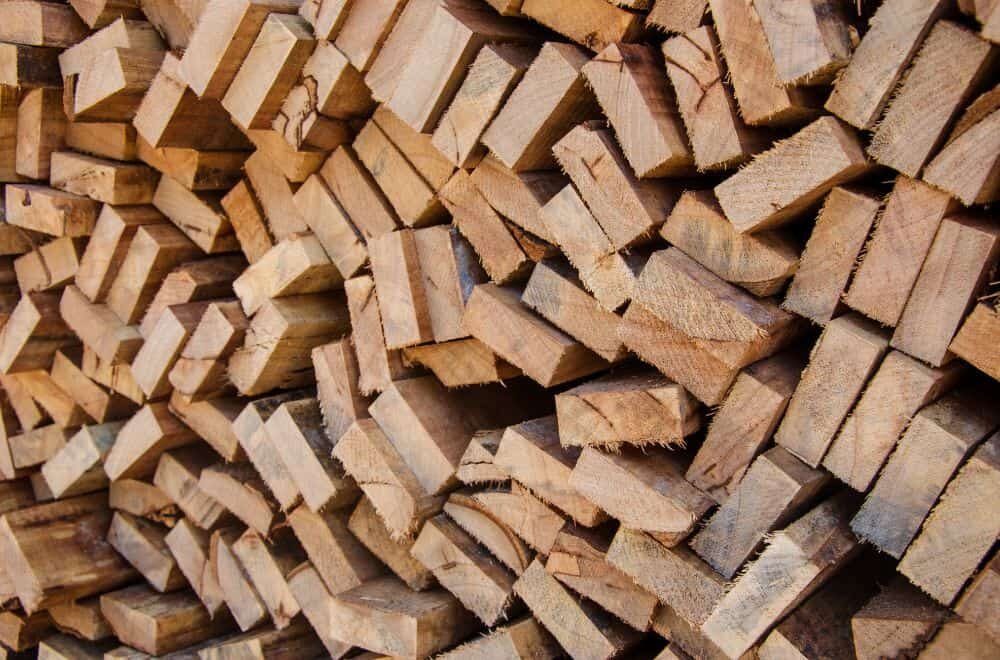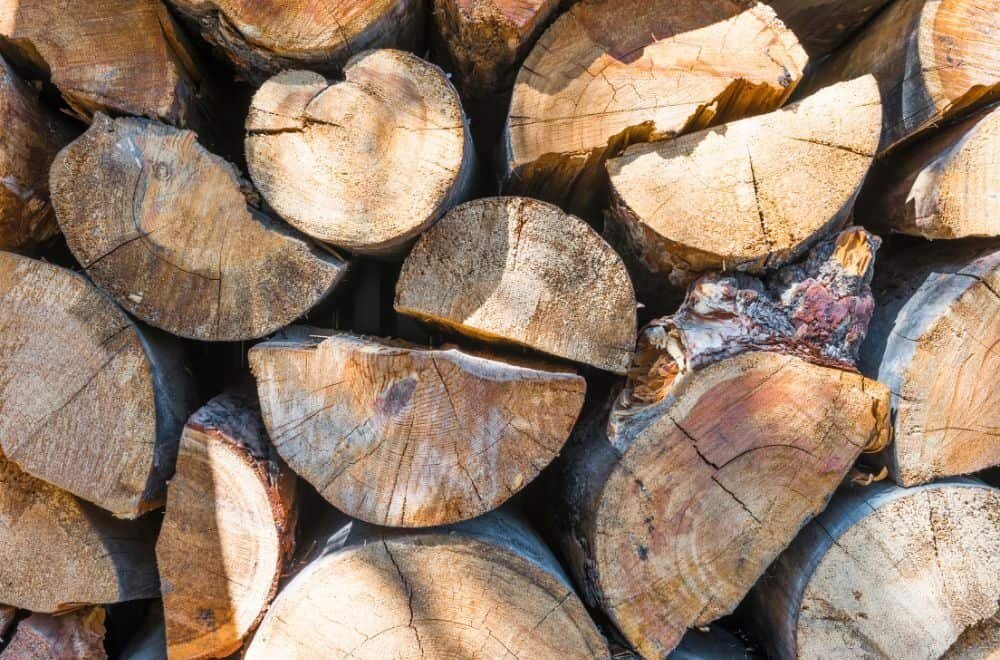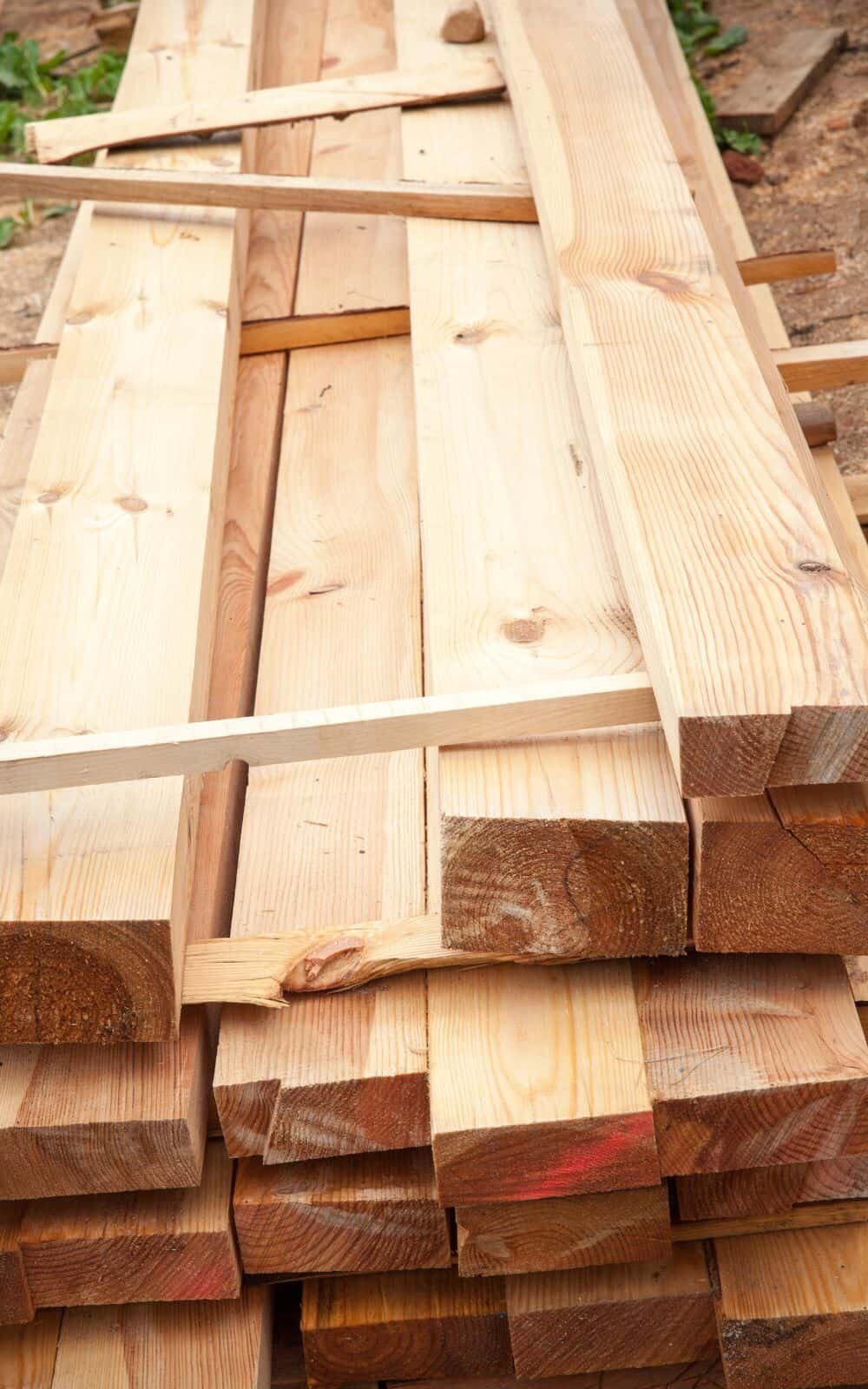If you’re new to woodworking or just starting out with DIY projects, you may be wondering whether pine wood is hard or soft. Pine is a popular choice for many projects due to its affordability and versatility, but it’s important to understand its characteristics before you begin working with it.
Pine is actually considered a softwood, which may come as a surprise to some. This is because pine trees have needles instead of leaves, and the wood itself is less dense and has smaller pores than hardwoods. However, this doesn’t mean that pine is a weak or inferior wood. In fact, pine is known for its durability and strength, and is often used for furniture, flooring, and construction projects.
Understanding Wood Types
When it comes to woodworking, understanding the different types of wood is essential. Wood can be broadly classified into two types: hardwood and softwood. In this section, we will discuss the characteristics of each type of wood.
Hardwood
Hardwood comes from deciduous trees, which are trees that lose their leaves in the fall. Hardwood trees grow more slowly and are denser than softwood trees, making them more durable and resistant to wear and tear.
Some common types of hardwood include oak, maple, mahogany, and walnut. Hardwood is typically more expensive than softwood due to its density and durability.
Softwood
Softwood comes from coniferous trees, which are trees that have needles or scales instead of leaves. Softwood trees grow more quickly and are less dense than hardwood trees, making them easier to work with.
Some common types of softwood include pine, cedar, and spruce. Softwood is typically less expensive than hardwood due to its abundance and ease of cultivation.
In general, the choice between hardwood and softwood depends on the project and its intended use. Hardwood is often used for furniture, flooring, and cabinetry, while softwood is commonly used for structural framing, outdoor projects, and decorative accents. It’s important to consider the characteristics of each type of wood before selecting the right one for your project.
Characteristics of Pine Wood

Pine wood is a type of softwood that is commonly used in various applications. Here are some characteristics of pine wood that you should know:
- Texture: Pine wood has a relatively soft texture compared to hardwoods. This makes it easier to work with using hand tools or power tools.
- Color: Pine wood ranges in color from a pale yellow to a light brown. Over time, it can darken to a warm reddish-brown color.
- Grain: Pine wood has a straight grain, which makes it easy to cut and work with. However, it can also have knots and other irregularities that can affect its strength and appearance.
- Density: Pine wood is less dense than many hardwoods, which means it is lighter and easier to work with. However, this also means it is less durable and may not hold up as well over time.
- Janka hardness rating: The Janka hardness rating measures the resistance of wood to wear and denting. Pine wood has a relatively low Janka hardness rating of 380 lbf, which means it is more prone to scratches and dents than many hardwoods.
Overall, pine wood is a versatile and affordable option for many woodworking projects. However, it may not be the best choice for applications that require high durability or resistance to wear and tear.
Comparing Pine Wood to Other Woods

When it comes to choosing the right wood for your woodworking projects, it’s important to know the differences between various types of woods. Pine wood is a popular choice among woodworkers, but how does it compare to other woods? Let’s take a closer look.
Pine Vs. Oak
Oak is a hardwood that is known for its strength and durability. It’s often used in furniture making and flooring. Pine, on the other hand, is a softwood that is more budget-friendly. While oak may be stronger than pine, it’s also more expensive. Pine is a great choice for projects where strength isn’t the main concern, such as decorative items or shelving.
| Pine | Oak | |
|---|---|---|
| Strength | Softwood | Hardwood |
| Price | Budget-friendly | Expensive |
| Uses | Decorative items, shelving | Furniture making, flooring |
Pine Vs. Cedar
Cedar is another popular wood choice for woodworking projects. It’s known for its natural resistance to insects and decay. Pine, on the other hand, is not naturally resistant to insects or decay. However, pine can be treated to improve its resistance. Cedar is also a more expensive wood than pine.
| Pine | Cedar | |
|---|---|---|
| Insect and decay resistance | Not naturally resistant | Naturally resistant |
| Price | Budget-friendly | Expensive |
| Uses | Treated for improved resistance | Outdoor furniture, decking, siding |
In summary, pine wood is a great choice for budget-friendly woodworking projects where strength and insect resistance are not the main concerns. However, if you need a stronger or more insect-resistant wood, oak or cedar may be a better choice, respectively.
Uses of Pine Wood

Pine wood is a versatile material that can be used for a wide range of projects. Here are some common uses of pine wood:
Furniture
Pine wood is a popular choice for furniture makers because it is relatively inexpensive and easy to work with. It is often used to make items like bookcases, bed frames, and dressers. Pine wood has a light color and a straight grain, which makes it easy to stain or paint to match any decor.
Construction
Pine wood is also commonly used in construction projects. It is often used for framing, flooring, and paneling. Pine wood is lightweight and easy to work with, which makes it a popular choice for DIY projects. It is also a renewable resource, which makes it an eco-friendly choice for builders.
When using pine wood in construction, it is important to keep in mind that it is a softwood and may not be as durable as hardwoods like oak or maple. However, with proper care and maintenance, pine wood can last for many years.
Overall, pine wood is a versatile and affordable material that can be used for a wide range of projects. Whether you are building furniture or constructing a new home, pine wood is a great choice that can help you save money while still achieving a high-quality result.
Pros and Cons of Pine Wood

Advantages of Pine Wood
Pine wood is a popular choice among woodworkers for many reasons. Here are some of the advantages of using pine wood:
- Affordable: Pine wood is one of the most affordable types of wood available, making it an excellent choice for budget-conscious woodworkers.
- Easy to Work with: Pine wood is relatively soft, making it easy to work with using hand tools or power tools. It is also easy to sand, stain, and paint.
- Lightweight: Pine wood is lightweight, making it easy to move and handle. This also makes it an excellent choice for furniture that needs to be moved around frequently.
- Attractive: Pine wood has a distinct grain pattern that gives it a warm, rustic look. It also takes stains and finishes well, allowing woodworkers to achieve a variety of looks.
Disadvantages of Pine Wood
While pine wood has many advantages, it also has some disadvantages that you should be aware of before using it in your woodworking projects. Here are some of the disadvantages of using pine wood:
- Softness: While the softness of pine wood makes it easy to work with, it also makes it more prone to dents and scratches. This can be a problem if you are using pine wood for furniture that will be heavily used.
- Not as Durable: Pine wood is not as durable as hardwoods like oak or maple. This means that it may not hold up as well over time, especially in high-traffic areas.
- Susceptible to Warping: Pine wood is more susceptible to warping than hardwoods. This can be a problem if you are using pine wood for furniture that needs to maintain its shape over time.
- Not as Strong: Pine wood is not as strong as hardwoods, which means that it may not be suitable for some applications, such as load-bearing structures.
Overall, pine wood is a versatile and affordable option for many woodworking projects. However, it is important to consider its pros and cons before deciding whether it is the right choice for your project.
Frequently Asked Questions
What are the disadvantages of using pine wood for furniture?
Pine wood is a softwood, which means it is not as durable as hardwoods. It is more prone to dents, scratches, and wear and tear. Pine wood is also susceptible to warping and cracking, especially when exposed to moisture or changes in temperature. Additionally, pine wood is not as resistant to insect infestations as hardwoods.
Is pine wood strong enough to use for furniture?
Pine wood is not as strong as hardwoods, but it can still be used for furniture. It is important to choose the right type of pine wood and to use proper construction techniques to ensure the furniture is sturdy and durable. Pine wood is suitable for lighter weight furniture such as chairs and tables, but may not be suitable for heavier pieces such as bed frames or bookcases.
What are the advantages and disadvantages of using pine wood?
The advantages of using pine wood include its affordability, availability, and easy workability. Pine wood is also lightweight, making it easier to move and transport. However, the disadvantages of using pine wood include its softness, susceptibility to damage, and lower durability compared to hardwoods.
What types of pine wood are commonly used for furniture?
White pine, yellow pine, and ponderosa pine are commonly used for furniture. White pine is softer and lighter in color, while yellow pine is harder and darker in color. Ponderosa pine is a popular choice for rustic furniture due to its unique grain patterns.
How does pine wood compare to hardwood in terms of strength?
Pine wood is not as strong as hardwoods such as oak, maple, or cherry. Hardwoods have a higher density and are more resistant to wear and tear. However, pine wood can still be used for furniture, especially for lighter weight pieces.
What are the properties of pine wood that make it suitable for furniture?
Pine wood is easy to work with, making it a popular choice for furniture makers. It is also affordable and readily available, making it a good option for those on a budget. Pine wood has a unique grain pattern that can add character to furniture pieces. However, its softness and lower durability make it less suitable for heavy use or high traffic areas.